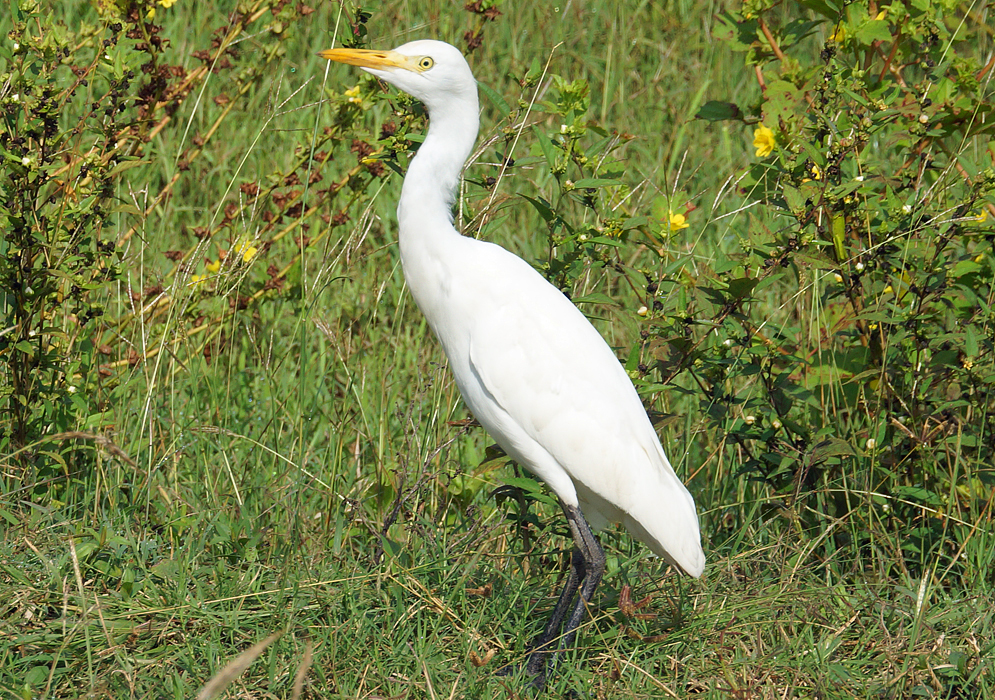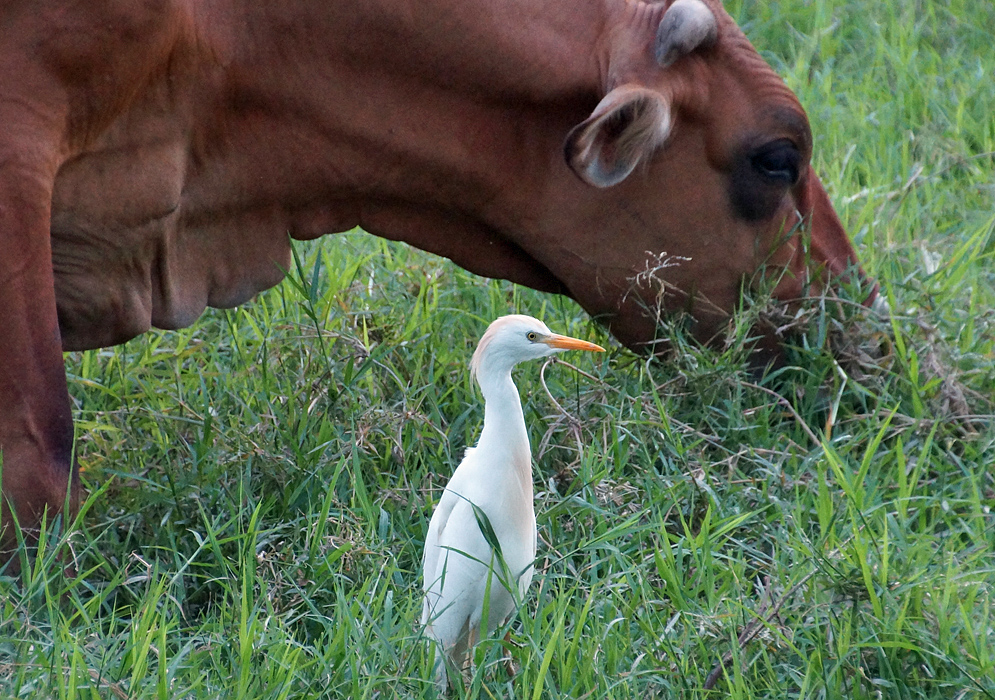This post has 11 Simple Fields-fields attached. Show fields.

The Cattle Egret belonging to the heron family (Ardeidae), with a global distribution. It originated in Asia, Africa, and Europe but has impressively expanded its range, colonizing much of the rest of the world over the past century. This species is the sole member of the genus Bubulcus, and there are two subspecies: the western cattle egret (B. ibis) and the eastern cattle egret (B. coromandus), with some authorities recognizing a third subspecies from the Seychelles (B. i. seychellarum). Distinctive for its white plumage, which turns buff during the breeding season, the cattle egret nests in colonies typically near water and often with other wading birds. Unlike other herons, it prefers drier and more open habitats such as grasslands, pastures, farmlands, wetlands, and rice paddies. Its diet mainly consists of insects, particularly grasshoppers, crickets, and flies, which are often flushed from grass by cattle or other large mammals. This species has a unique symbiotic relationship with these grazing animals, benefiting from the insects they disturb and, in turn, helping the animals by removing parasites like ticks and flies. Cattle Egrets are also known for their adaptability and opportunistic feeding habits, sometimes scavenging in dumps for edible refuse and following tractors or lawnmowers to catch insects disturbed by these machines. This adaptability extends to their migratory behavior. Birds from northern breeding areas in North America may migrate to the West Indies, Central America, and northern South America, displaying a strong migratory tendency. Their ability to disperse over long distances, sometimes thousands of miles. Conservation-wise, the Cattle Egret is not currently endangered. Its North American population, which was unknown prior to 1952, may still be increasing, though not as rapidly as in earlier years. While it may compete with native species for nest sites in northern heronries and has even crowded out native herons or egrets in some instances, generally, it has little negative impact on other native species. Photographed in northern Colombia.



